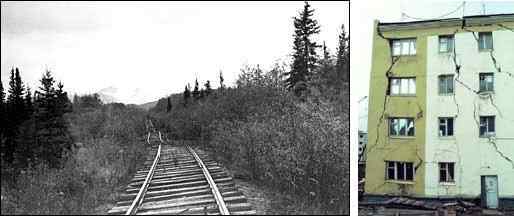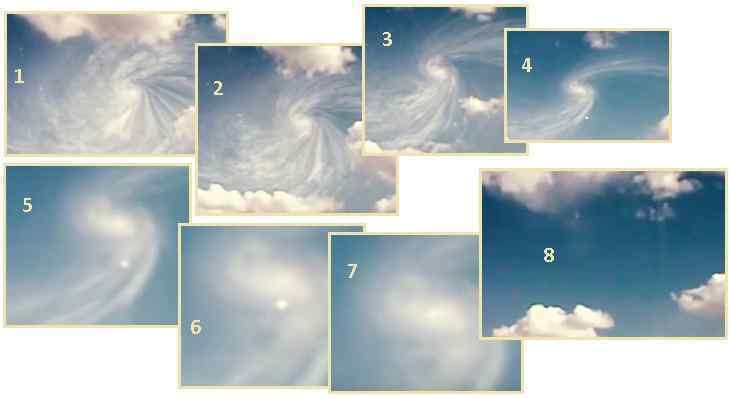
| |
 |
ZetaTalk Chat Q&A for January 9, 2016
What caused his death? [and from another] Chief of the Main Intelligence Directorate Igor Sergun died suddenly on 59 th year of life. This is stated in a telegram of condolences published on the website of President Vladimir Putin. Igor Sergun was appointed head of the GRU - Deputy Chief of the General Staff of 26 December 2011. His predecessor, Alexander Shlyakhturov was discharged due to reaching age limit for military service. [and from another] http://www.weeklystandard.com/the-strange-death-of-igor-sergun/article/2000418 On Monday, the Kremlin reported the death of Colonel General Igor Sergun, who has served as head of the GRU, the main intelligence branch of the Russian general staff since late 2011. A short statement posted in Russian on the Kremlin’s website said that Sergun died suddenly on Sunday evening, but failed to mention any presumed cause or even the location of his death. Sergun is credited as an important figure in the renaissance of the GRU, which had suffered deep staff and budget cuts prior to his arrival. Under Sergun, the agency regained political power within the Russian government as well as control over the Spetsnaz special forces, making it "crucial in the seizure of Crimea and operations in the Donbas," as well as "as the lead agency for dealing with violent non-state actors." The Kremlin's announcement comes less than a month after the announced retirements or sackings of 10 local law enforcement officials, which Russia expert Mark Galeotti described as pointing towards "a desire to make sure the internal security forces are in good shape and ready for action." There are changes at the top, though for what purpose and in which direction remains unclear.
Why was no cause of death given for Igor Sergun? His was not a death from
natural causes, though at 59 years of age a heart attack could have been
asserted. Putin chose not to lie, but rather allow the truth to be
discerned. Where Sergun was effective at his job and well respected for
this, he had an agenda that countered Putin’s agenda. Obama has been known
to clean house, removing General’s
Petraeus and General Allen
for various reasons, though the real reason was planned treason against
Obama. They were working to prevent the planned announcement
admitting Nibiru. The announcement is again close at hand, a multi-pronged
announcement so powerful and from so many sources that it could not be
denied. Assassinations in these situations are hardly new, but most are
wrapped in talk of suicide or heart attack or an accident. Putin prefers
to let the obvious be obvious, as a warning to others who might be
contemplating interference with Putin’s plans.
What can we expect if in some regions, the depth of the permafrost is more than 200 m? Should we wait for the complete destruction of infrastructure before the last weeks, due to the melting of the permafrost? Due to the presence of permafrost in northern latitudes makes these regions are more dangerous to a methane explosion. Will this phenomenon was soon widespread in these latitudes? In other words, what should we expect? [and from another] http://www.wunderground.com/climate/permafrost.asp A railroad in Alaska and building, both buckled due to thawing permafrost. Image credit: NASA and U.S. Geological Survey, Vladimir Romanovsky, Geophysical Institute, University of Alaska Fairbanks. [and from another] http://inosmi.ru/ecology/20111006/175608753.html Permafrost covers 10.7 million square kilometers of the territory of Russia - about 63% of the whole country. Similarly, the infrastructure, including roads and railways, high-rise apartment buildings, and oil and gas industry, are built directly on the frozen ground. But all that could change if permanently frozen layer below the seasonal thaw way surface starts to melt too. "Russian Railways" is the operator for more than five thousand kilometers of railways in permafrost regions, they say, is already familiar with the problem, and regularly fight with settling the railroad tracks. "The main effect of the melting of the permafrost - is subsidence. There are areas of land that are flooded or shifted in unpredictable ways. This can manifest itself as a local subsidence, of a few tens of meters, and can be as long wavy line that stretches a kilometer or more, "- note the" Russian Railways "in a written statement describing the impact of melting permafrost on the landscape" . The resulting "thermokarst" the landscape is characterized by rapidly emerging lakes and irregular hills interspersed with swamps. What makes the situation even worse, resulting from accumulation of water lead to a reduction of the upper level of the permafrost, causing flooding. It also reduces the carrying capacity of the land, says the company. But suffer not only railways. In earlier reports on the impact of global warming from the Federal Meteorological Service noted that "the power of the bases of buildings and engineering structures located in the permafrost zone, dropped in some regions of Siberia" because of changes in the carrying capacity of the earth caused by the warming and the increasing depth of seasonal thawing .

Those living in a permafrost region have no choice but to suffer through
the melt, which in any case will be a limited time period. The new Equator
will run through the Arctic, such will be the regions exposure to full
Sun. How long will a bit of frozen ground last in the Tropics? It would be
melted within weeks. The struggle with melting permafrost at present is
due to the Earth wobble putting these regions under more warn air and to
some degree under more sunlight. It is slight, but enough to open eyes as
to what will happen with infrastructure built over permafrost.
The ground will soften, in many cases be mushy as the surface melt has
nowhere to drain until the thaw is complete. Combined with mushy ground
and warping railroad lines and destabilized building foundations, regions
such as Siberia must anticipate methane
explosions. These can be horrific, though rare, and cannot really be
predicted ahead of time unless a means to determine a methane cloud
underground can be developed, so these could be punctured to release ahead
of an explosion. New settlements should be located on solid rock, not
permafrost soil, and existing settlements relocated if possible.
Watch and listen as UFO enters vortex above CERN Hadron Collider. [and from another] http://www.skyshipsovercashiers.com/globallinks#cernvortex Watch an action-packed 1:53 minute video of a huge and fast-forming vortex in the sky above Geneva, Switzerland where the CERN Hadron Collider is located. But that’s only the first act of this short December 7, 2015 video. The second act shows a UFO entering the center of the vortex and vanishing. [and from another] https://www.youtube.com/watch?v=ST6X0Ra7zOQ

This is a legitimate video capture of a temporary situation, rising
suddenly and dissipating just as quickly. And indeed, it occurred in the
vicinity of the CERN collider. Swirls in the sky, even magnetic swirls,
are nothing new, and increasingly occurring. Swirls can be incomplete
tornadoes, or they can be as a result of an electro-magnetic disruption
caused by the charged tail of Nibiru, aka Planet X, wafting the area. In
these cases, there are often neon clouds associated, chemicals in the tail
lit by the charge. This was the case in Norway in 2009 when the charge
grounded via a blue neon spiral. This was the case over LA in 2015 when
the establishment had to muster an excuse about missile tests out over the
ocean to explain the neon swirls.
This swirl over CERN is a magnetic swirl that was just developing. Indeed
a UFO dove into the center of the swirl, to disrupt the process. This was
done so that panic and rumors about CERN would not develop. The swirl was
a result of Europe being in the stretch zone, subject to rock being pulled
apart from Scandinavia to Tibet, and this creates lots of electronic
screech in the rocks. Problems with air travel have resulted, the
Germanwings crash into the Alps an example. The Germanwings crash occurred
close to CERN also. The magnetic swirl developing over CERN had nothing
to do with CERN, but would have been misinterpreted had it not been
stopped.